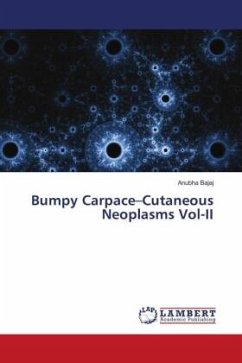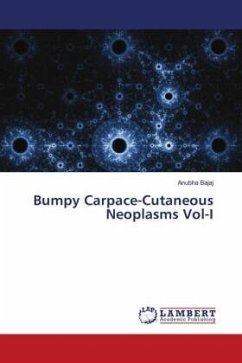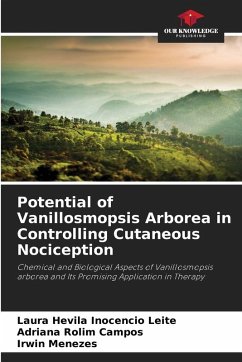
Bumpy Carpace-Cutaneous Neoplasms Vol-II
Versandkostenfrei!
Versandfertig in 6-10 Tagen
68,99 €
inkl. MwSt.

PAYBACK Punkte
34 °P sammeln!
Keratoacanthoma was initially scripted by Hutchison in 1889 and is cogitated as a squamo- proliferative lesion of obscure aetiology which predominantly occurs on sun- exposed skin and infrequently on the mucocutaneous junction. Keratoacanthoma denotes a nomenclature of a self healing carcinoma, molluscum sebaceum, molluscum pseudocarcinomatosum , self healing primary squamous cellcarcinoma, tumour like keratosis and idiopathic cutaneous pseudoepitheliomatous hyperplasia. It is morphologically challenging to differentiate the centroidal segment of keratocanthoma from a squamous cell carcinoma.K...
Keratoacanthoma was initially scripted by Hutchison in 1889 and is cogitated as a squamo- proliferative lesion of obscure aetiology which predominantly occurs on sun- exposed skin and infrequently on the mucocutaneous junction. Keratoacanthoma denotes a nomenclature of a self healing carcinoma, molluscum sebaceum, molluscum pseudocarcinomatosum , self healing primary squamous cellcarcinoma, tumour like keratosis and idiopathic cutaneous pseudoepitheliomatous hyperplasia. It is morphologically challenging to differentiate the centroidal segment of keratocanthoma from a squamous cell carcinoma.Keratacanthoma is designated as a benign skin tumefaction of minimal grade with a potential for expeditious evolution. Lesions are dome shaped with a centralized keratinous plug and range betwixt one centimetre to two centimetre in magnitude.Keratoacanthoma was contemplated as a malignant skin condition prior to 1917. Lesions were denominated as a verruca or vegetative cyst amidst 1920's whereas betwixt 1936 to 1950 lesions were referred to as molluscum sebaceum.












